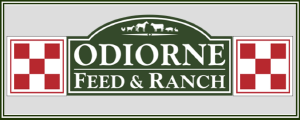Native Grass Seed

Alan Shadow, East Texas Plant Materials Center, Nacogdoches, Texas
When it comes to seeding your lawn or pasture, Odiorne Feed & Ranch has plenty of native grass seed options for you to choose from.
Native Grasses
Side-oats Grama
A bunchy or sod-forming grass with 2-3 ft. stems in erect, wiry clumps. Purplish, oat-like spikelets uniformly line one side of the stem, bleaching to a tan color in the fall. The basal foliage often turns shades of purple and red in the fall. This is a perennial warm-season grass; clump-forming. Two varieties are recognized: variety curtipendula is shorter and more rhizomatous and ranges from southern Canada to Argentina. Variety caespitosa spreads more by seed than by rhizomes, is more of a bunchgrass, and is restricted mostly to southwestern North America.
Not only is Sideoats Grama the state grass of Texas, but this medium-tall grass mixes well in plantings with spring wildflowers, because it stays short in the spring. Birds love the ripe seeds. This plant increases rapidly in nature when its site is damaged by drought or grazing.
Blue Grama
This is among the shortest of the native ornamental grasses, only reaching 12-14 in. in full flower. It is fine-leaved and produces blue-green seedheads which are suspended horizontally like tiny brushes from the tip of each stem. The plant turns tan when dormant. Blue grama grows in bunches in the south, and as a sod-former in the north and at high elevations. It is a perennial.
This is an important, drought-resistant, short grass in the mixed prairies and throughout the Great Plains and the Southwest. It can be confused with Hairy Grama Grass (B. hirsuta), which is distinguished by a sharp point extending beyond the florets. A somewhat similar but shorter species, Buffalograss (B. dactyloides), is usually less than 6 inches (15 cm) high and is typical of dry, short-grass plains. Blue grama is commonly planted as a turfgrass mixed with Buffalograss. Great also for planting in a wildflower meadow and grows easily from seed. One of the most important forage grasses in native ranges.
Little Bluestem
This is a very ornamental bunchgrass with fine-textured foliage that forms very dense mounds 18-24 inches tall. Slender blue-green stems reach 3 feet by September and become radiant mahogany-red with white, shining seed tufts in the fall. Color remains nearly all winter. Perennial clumps grow up to a foot in diameter.
This mid-prairie species gets its name from the bluish color of the stem bases in the spring, but most striking is the plants’ reddish-tan color in fall, persisting through winter snows. The seeds, fuzzy white at maturity, are of particular value to small birds in winter. A related species, Big Bluestem or Turkeyfoot (Andropogon gerardii), has finger-like seed heads that somewhat resemble a turkey’s foot. It reaches a height of 12 feet in favorable bottomland sites and is also one of the East’s most important native prairie grasses.
Green Sprangletop
A 2-3 ft., fast-growing, bluish-green bunchgrass with wiry stems. The terminal inflorescences are up to 6 in. long with spreading or ascending branches and florets which spread open widely at maturity.
Yellow Indian Grass
A tall, bunching sod-former, 3-8 ft. in height, with broad blue-green blades and a large, plume-like, soft, golden-brown seed head. This showy perennial’s fall color is deep orange to purple.
This is a beautiful grass with a somewhat metallic golden sheen to its flowering parts. It is an important associate in the tallgrass prairies and is relished by livestock. It appears to be favored by occasional flooding and repeated burning and sometimes forms nearly pure stands in the lowlands. Warm-season grass with rich gold-and-purple sprays of flowers and seeds in the fall. (Ontario Native Plants 2002)
Stop by Odiorne Feed & Ranch for native grass seed, fertilizer, and all the supplies you need.
Source: Lady Bird Johnson Wildlife Center
